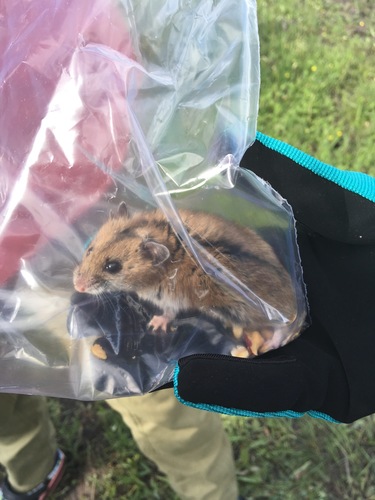
Chinese Striped Hamster
The Chinese striped hamster (Cricetulus barabensis) is a solitary night wanderer of China's steppes. Recognizable by its striking dorsal stripe, it forages seeds, aiding in seed dispersion and soil health, thus maintaining ecological balance in its native habitats.
2-3 years
Lifespan
20.1 - 24.9 g
Weight
Length: 14 - 27 cm
Size
Brown, Grey, White, Tan, Sandy
Color
4-5 weeks
Age of Sexual Maturity
3 weeks
Age of Weaning
5 mph
Top Speed
Least Concern
Conservation Status
Unknown
Population Trend
Characteristics
Cricetulus barabensis, commonly known as the Chinese striped hamster, inhabits grassy steppes and semi-deserts across China and Mongolia. Noted for its distinctive dorsal stripe, this nocturnal rodent is a solitary forager, feeding on seeds and grains. It plays a crucial role in seed dispersion and soil aeration within its ecosystem.
Distribution Range of the Chinese Striped Hamster
Cricetulus barabensis, commonly known as the Chinese striped hamster or the striped dwarf hamster, is native to parts of East Asia. Its geographical distribution includes countries such as China, Mongolia, Korea, and parts of Russia. The species is primarily found in the northern and northeastern regions of China, extending into Mongolia and the southern parts of Siberia in Russia.
Chinese Striped Hamster's Habitat
Environmental Conditions
The Chinese striped hamster typically inhabits temperate grasslands, steppe regions, and semi-desert areas. These environments are characterized by relatively dry conditions with seasonal temperature variations. Summers are warm, while winters can be cold with occasional snow cover.
Ecological Niche
Cricetulus barabensis is well-adapted to life in open, grassy areas where it can dig burrows for shelter and protection. Its ecological niche involves foraging for seeds, grains, and other plant materials, making it an important seed disperser in its habitat. The species also exhibits adaptability to agricultural landscapes, where it may sometimes be regarded as a pest.
Copyright @ Nature Style Limited. All Rights Reserved.
 English
English